Evit 200 | Capsule | 10 pcs
৳ 40.30
Brand Name: Evit Capsule (Liquid Filled)
Generic: Vitamin E [Alpha Tocopherol Acetate]
200 mg
Manufacturer: Square Pharmaceuticals Ltd.
Unit Price: ৳ 4.03 (30’s pack: ৳ 120.90)
Indications
As dietary supplement:
- Vitamin E deficiency resulting from impaired absorption
- Increased requirements due to diet rich in polyunsaturated fats
- For healthy hair & skin
- As an antioxidant
- Hemolytic anemia due to Vitamin E deficiency
Therapeutic use:
- Cardiovascular disease
- Heavy metal poisoning
- Hepatotoxin poisoning
- Hemolytic anemia
- Oxygen therapy
- In nutritional deficiency states.
Therapeutic Class
Vitamin-E Preparations
Pharmacology
Vitamin E acts as an antioxidant in the body. Vitamin E protects polyunsaturated fatty acids (which are components of cellular membrane) and other oxygen-sensitive substances such as vitamin A & vitamin C from oxidation. In premature neonates irritability, edema, thrombosis and hemolytic anemia may be caused due to vitamin E deficiency. Creatinuria, ceroid deposition, muscle weakness, decreased erythrocyte survival or increased in vitro hemolysis by oxidizing agents have been identified in adults and children with low serum tocopherol concentrations.
Dosage & Administration
Betterment of cardiovascular health: 400 IU-800 IU per day
Deficiency syndrome in adults: 200 IU-400 IU per day
Deficiency syndrome in children: 200 IU per day
Thalassemia: 800 IU per day
Sickle-cell anemia: 400 IU per day
Betterment of skin & hair: 200 IU-400 IU per day (Topical use is also established for beautification)
Chronic cold in adults: 200 IU per day
Deficiency syndrome in adults: 200 IU-400 IU per day
Deficiency syndrome in children: 200 IU per day
Thalassemia: 800 IU per day
Sickle-cell anemia: 400 IU per day
Betterment of skin & hair: 200 IU-400 IU per day (Topical use is also established for beautification)
Chronic cold in adults: 200 IU per day
Interaction
Vitamin E may impair the absorption of Vitamin A & function of Vitamin K and potentiates the effect of Warfarin.
Contraindications
No known contraindications found.
Side Effects
Overdosage (>1 gm) have been associated with minor side effects, including hypertension, fatigue, diarrhea and myopathy.
Pregnancy & Lactation
Vitamin E is safe in pregnancy and lactation, when used as recommended doses. Higher doses are not established.
Precautions & Warnings
It may increase the risk of thrombosis in some patients, such as those taking estrogens.
Use in Special Populations
Vitamin E is safe for children.
Storage Conditions
Keep in a dry place away from light and heat. Keep out of the reach of children.
| Generic Name | Vitamin E |
|---|---|
| Size | 200 mg |
Only logged in customers who have purchased this product may leave a review.

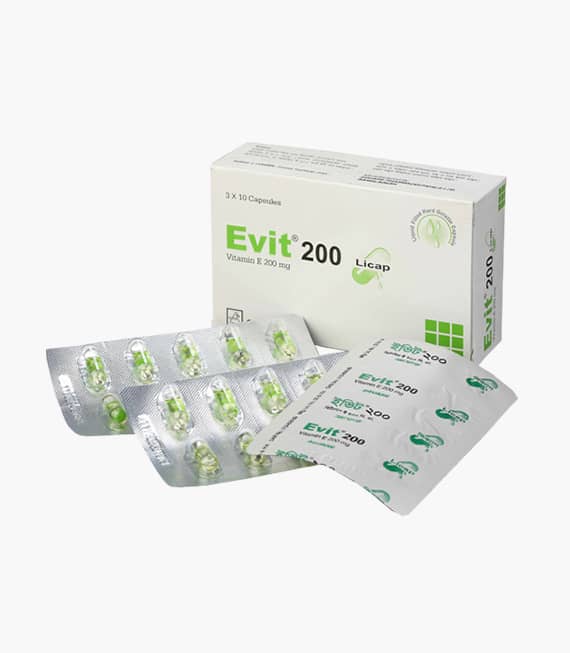

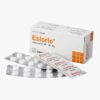


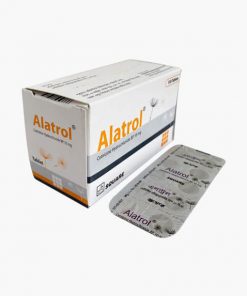
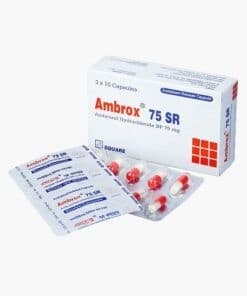


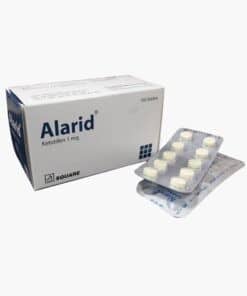
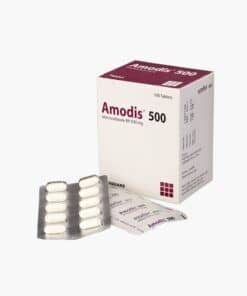

Reviews
There are no reviews yet.